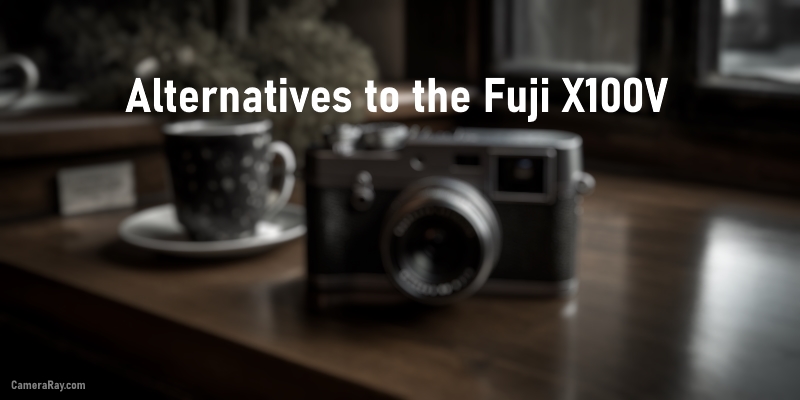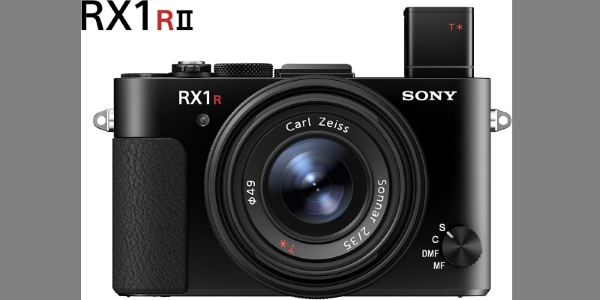
Comparing Camera Alternatives to the Fuji X100V: Discover the Best Option for You.
The Fuji X100V is a well-known and highly regarded compact camera, especially popular among street and travel photographers. With its fixed 23mm f/2 lens and a 26.1-megapixel X-Trans CMOS 4 sensor, the X100V delivers outstanding image quality in a small and stylish package. However, the market for compact cameras is vast, and there are alternatives that may be better suited to your specific needs. In this article, we’ll explore four cameras that compare favorably to the Fuji X100V and discuss why you should consider one of these options instead.
Ricoh GR IIIx
The Ricoh GR IIIx is an excellent alternative to the Fuji X100V, particularly for those who value a compact size and portability. This camera features a 24.2-megapixel APS-C CMOS sensor and a fixed 40mm f/2.8 equivalent lens. Its sleek design and lightweight build make it an ideal choice for photographers who want to travel light without sacrificing image quality.
Key Features:
24.2-megapixel APS-C CMOS sensor
40mm f/2.8 equivalent lens
3-axis Shake Reduction System
3-inch touchscreen LCD
USB-C charging and data transfer
Why Choose the Ricoh GR IIIx Over the Fuji X100V?
The Ricoh GR IIIx has a slightly wider field of view compared to the X100V, which some photographers may find more versatile. The GR IIIx also has a more pocketable size and a built-in 3-axis Shake Reduction System, making it an excellent choice for those who need a compact camera for travel or street photography.
Leica Q2
The Leica Q2 is a premium compact camera that rivals the Fuji X100V in terms of image quality and build. With its full-frame 47.3-megapixel CMOS sensor and fixed 28mm f/1.7 Summilux lens, the Q2 delivers stunning image quality in a robust and elegant body. This camera is perfect for photographers who demand the highest quality images and are willing to invest in a top-tier compact camera.
Key Features:
47.3-megapixel full-frame CMOS sensor
28mm f/1.7 Summilux lens
3.68MP OLED electronic viewfinder
Dust and weather-sealed body
4K video recording
Why Choose the Leica Q2 Over the Fuji X100V?
The Leica Q2 offers superior image quality due to its larger full-frame sensor and faster lens, which enables better low-light performance and shallower depth of field. The Q2 also has a more rugged build, with a dust and weather-sealed body, making it a better choice for photographers who often shoot in challenging environments.

Sony RX1R II
The Sony RX1R II is another excellent full-frame compact camera that rivals the Fuji X100V in terms of image quality. It features a 42.4-megapixel Exmor R CMOS sensor and a fixed 35mm f/2 Zeiss Sonnar T* lens, providing impressive image quality and sharpness. Its compact size and advanced features make it a compelling alternative for photographers who value performance and portability.
Key Features:
42.4-megapixel full-frame Exmor R CMOS sensor
35mm f/2 Zeiss Sonnar T* lens
2.36M-dot OLED electronic viewfinder
3-inch tilting LCD screen
Fast hybrid autofocus system
Why Choose the Sony RX1R II Over the Fuji X100V?
The Sony RX1R II boasts a larger full-frame sensor and a slightly wider field of view, making it a more versatile option for various photography styles. Additionally, its fast hybrid autofocus system provides quick and accurate focusing, which is beneficial for capturing fast-moving subjects. The tilting LCD screen also offers added flexibility when composing shots from different angles, a feature not present on the X100V.
Canon PowerShot G1 X Mark III
The Canon PowerShot G1 X Mark III is a versatile compact camera with a 24.2-megapixel APS-C CMOS sensor and a 24-72mm f/2.8-5.6 equivalent zoom lens. This camera offers photographers greater flexibility in terms of focal length, making it an attractive option for those who want a single compact camera that can handle a wide range of subjects and situations.
Key Features:
24.2-megapixel APS-C CMOS sensor
24-72mm f/2.8-5.6 equivalent zoom lens
Dual Pixel CMOS AF
2.36M-dot OLED electronic viewfinder
3-inch vari-angle touchscreen LCD
Why Choose the Canon PowerShot G1 X Mark III Over the Fuji X100V?
The most significant advantage the G1 X Mark III offers over the X100V is its zoom lens, which provides more flexibility in composing shots and capturing various subjects. The G1 X Mark III also features Canon’s renowned Dual Pixel CMOS AF system, which ensures fast and accurate autofocus performance. The vari-angle touchscreen LCD adds another layer of versatility, allowing for easier composition from challenging angles.
While the Fuji X100V remains a popular choice among photographers, these four alternatives offer unique advantages and features that may better suit your specific needs. When deciding between the Fuji X100V and one of these alternatives, consider factors such as sensor size, lens versatility, autofocus performance, and build quality. Ultimately, the best compact camera for you will depend on your personal preferences and the type of photography you are into. Happy hunting!